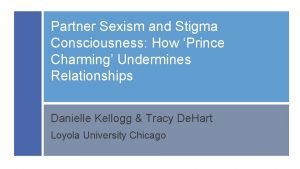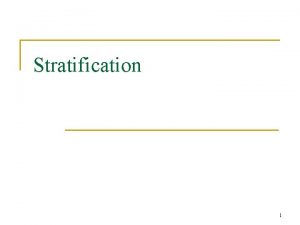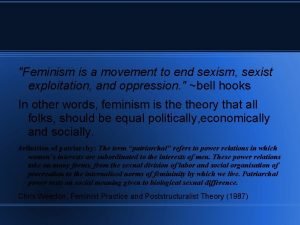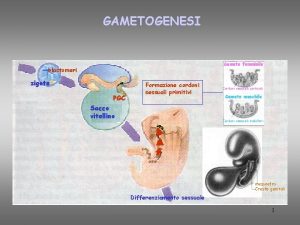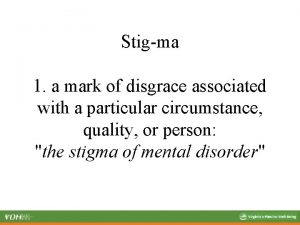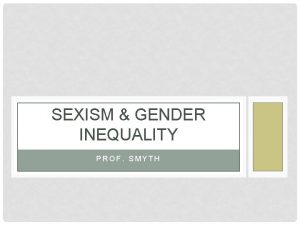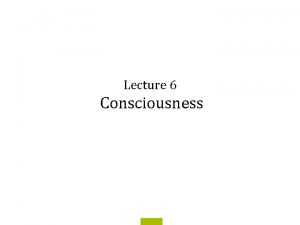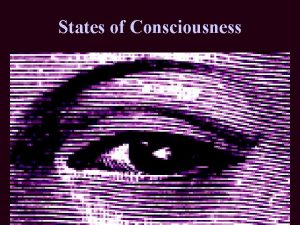Partner Sexism and Stigma Consciousness How Prince Charming



















- Slides: 19

Partner Sexism and Stigma Consciousness: How ‘Prince Charming’ Undermines Relationships Danielle Kellogg & Tracy De. Hart Loyola University Chicago

Romantic Relationship Functioning Promoting healthy and satisfying relationships is important (Baumeister & Leary, 1995; Feeney & Collins, 2015; Knowles et al. , 2010) Perceived rejection from one’s partner inhibits relationship promotion goals (Murray, Derrick, Leder, & Holmes, 2008) Little known about the effects of perceived partner benevolent sexism on relationship functioning

Benevolent Sexism and Close Relationships Complementary forms of sexism with context-specific functions and a shared objective (Glick & Fiske, 1997) Hostile and benevolent sexism Perceived partner benevolent sexism related to negative relationship functioning (Hammond & Overall, 2013)

Stigma Consciousness Chronically accessible expectations of being a victim of stereotyping (Pinel, 1999) Highly stigma consciousness women reported lower relationship functioning after recalling instances of general perceived discrimination (De. Hart, 2017) Stigma consciousness should moderate the relation between perceived partner benevolent sexism and relationship functioning

Chronic Perceived Partner Sexism Exposure to sexism contributes to negative physical and mental health outcomes (Fischer & Bolton Holz, 2007; Major & O’Brien, 2005; Salomon, Burgess, & Bosson, 2015) Chronic perceived partner sexism should moderate relation between a partner benevolent sexism manipulation, stigma consciousness, and relationship functioning

Hypotheses Significant Chronic Perceived Partner Sexism X Stigma Consciousness X Sexism Condition interaction Low chronic perceived partner sexism: Significant Stigma Consciousness X Sexism Condition interaction High chronic perceived partner sexism: Significant Stigma Consciousness X Sexism Condition interaction

Hypothesis 1 - Low chronic perceived partner sexism: Benevolent Sexism: High (versus low) stigma consciousness will relate to lower relationship functioning Control: Stigma consciousness will be unrelated to relationship functioning

Hypothesis 2 – High chronic perceived partner sexism: Benevolent Sexism: High (versus low) stigma consciousness will relate to even lower relationship functioning Control: High (versus low) stigma consciousness will relate to lower relationship functioning

Participants Sample of married or cohabiting mothers currently involved in a heterosexual relationship Screening survey on Amazon MTurk 18 or older, female, heterosexual, currently in a relationship with a male partner who they are living with, currently living with their child (children) 207 participants; 177 included in final analyses Average was 38. 28 (ranged from 20 -70) Average relationship duration was 13. 85 (ranged from 1. 08 - 42. 50)

Pre-manipulation measures Stigma Consciousness Questionnaire for Women (SCQ-W; Pinel, 1999) “When interacting with men, I feel like they interpret all of my behaviors in terms of the fact that I am a woman” (�� =. 87) Ambivalent Sexism Inventory (Hammond et al. , 2016; from Glick & Fiske, 1996) “Women should be cherished and protected by men” (�� =. 85)

Benevolent sexism manipulation writing task Benevolent Sexism Control “Think about situations that are a common part of all relationships…recall instances where your current partner engaged in chivalrous behavior, placed you on a pedestal, or assigned tasks in line with traditional gender norms. You may also think about times when your current partner assumed you could not do certain things because of your gender” “Please think about the last movie you saw in a movie theater with your current relationship partner…recall details about the plot, the characters, the music, and the overall impression you had while watching this film” Describe the event in detail Describe how the recalled situation made you feel Describe the event in detail Describe how the recalled movie experience made you feel

Relationship functioning Composite “relationship functioning” variable (α =. 96) Relationship satisfaction (De. Hart, Murray, Pelham, & Rose, 2003) “I am extremely happy with my relationship with my partner” Reflected appraisals “I am confident my partner will always love me” Relationship closeness Adapted Inclusion of Other in the Self Scale (Aron, & Smollan, 1992)

Manipulation check Benevolent sexism manipulation check “The event I just recalled demonstrates that my current partner treats me differently because I am a woman”

Perceived Benevolent Sexism Figure 1. Perceived benevolent sexism as a function of manipulation condition. 7 6 5 4 3 2 1 Benevolent Sexism Control Condition

Low chronic perceived partner sexism 7 6 5 4 Control 3 Sexism 2 1 Low High Stigma Consciousness Relationship Functioning Figure 2. Relationship functioning as a function of chronic perceived partner sexism, stigma consciousness, and benevolent sexism condition. High chronic perceived partner sexism 7 6 5 4 Control 3 Sexism 2 1 Low High Stigma Consciousness

Hypothesis 1 - Summary and Discussion Hypothesis 1 – Low chronic perceived partner sexism: • Expected stigma consciousness to be negatively related to relationship functioning in the benevolent sexism, but not control, condition • Stigma consciousness was unrelated to relationship functioning in both conditions Conclusions • Not supported • Stigma consciousness responds differently to benevolent sexism

Hypothesis 2 - Summary and Discussion Hypothesis 2 – High chronic perceived partner sexism: • Expected stigma consciousness to be negatively related to relationship functioning in both conditions (to a different degree) • Stigma consciousness was negatively related to relationship functioning in the control condition, but unrelated in the benevolent sexism condition Conclusions • Not supported • Compensating for partner’s sexism only when explicitly reminded of it

Conclusions and Future Directions Stigma consciousness operates differently in response to perceived sexism from a close other Study different relationship contexts Follow-up study with a sample of undergraduate students in dating relationships

TRACY DEHART ROBYN MALLETT Thank You! JOHN EDWARDS SELF AND SOCIAL INTERACTION LAB
 Prince charming partner
Prince charming partner Us social hierarchy
Us social hierarchy Balcony scene romeo and juliet script
Balcony scene romeo and juliet script Lion king sexism
Lion king sexism Sexism in schools
Sexism in schools 18+sex
18+sex Sexism in sexist photo
Sexism in sexist photo Where have you gone charming billy
Where have you gone charming billy Where have you gone charming billy audio
Where have you gone charming billy audio 恩典夠我用 永不感力窮
恩典夠我用 永不感力窮 What is characterization literary device
What is characterization literary device Stigma associated with failure and repetition is removed
Stigma associated with failure and repetition is removed Inc
Inc Part of flower comprising stigma style and ovary
Part of flower comprising stigma style and ovary Sepal function
Sepal function Ovogoni
Ovogoni Stigma style ovary
Stigma style ovary Chi xi stigma in arabic
Chi xi stigma in arabic Stigma image
Stigma image Associatief stigma
Associatief stigma
